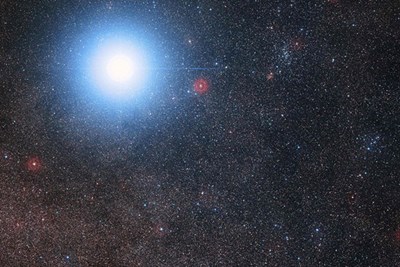Upcoming Projects, Missions Will Study the Solar System and Beyond

This photo illustration shows the Schueller Astronomical Observatory’s Celestron 14-inch telescope housed inside a metal dome that’s 16½ feet in diameter.
01/15/2020
By Edwin L. Aguirre
As UMass Lowell embarks on a new year – and a new decade – our university community can look forward to astronomy- and space-related projects and missions on the horizon. From exploring the solar system and searching for habitable planets around nearby stars to zapping the Martian surface with a laser, our faculty and student researchers are working to gain a better understanding of the cosmic neighborhood in which we live. Here’s an overview of what’s in store in the months ahead.
A New Window to the Universe Opens on South Campus
Students interested in astronomy, as well as non-science majors and the public, will get a chance to embark on a visual tour of our solar system and beyond when the new Schueller Astronomical Observatory opens on South Campus this spring. The facility features a computer-controlled Celestron 14-inch Schmidt-Cassegrain telescope, which will provide high-resolution views of the craters and lava plains on the moon, the satellites of Jupiter and its cloud belts, and the rings of Saturn, as well as star clusters, galaxies and nebulae light-years away.
Aside from being operated on-site, the telescope is also designed to be remotely controlled by students and faculty from anywhere on campus. Physics majors and students taking introductory astronomy classes will be able to use the telescope to conduct observations, lab exercises and capstone projects, while graduate students can use it to do research in the areas of imaging, spectroscopy, photometry and astrometry.
NASA’s Mars 2020 Mission to Launch This Summer\
 Image by NASA/JPL-Caltech
Image by NASA/JPL-Caltech
The Mars 2020 rover can be seen exploring the interior of Jezero Crater on Mars in this NASA illustration. The SuperCam instrument is mounted on the rover’s central mast.
Melikechi’s pioneering research has led to advancements in the use of lasers for studying the geochemistry of Mars as well as for diagnosing cancers. SuperCam will analyze the surface composition of Mars by firing intense pulses of laser on distant rocks, boulders or sediments. The resulting flash of light is picked up by the instrument, which identifies the different chemical elements present in the target rock, and the data is transmitted to Earth for analysis. Melikechi has also been involved with analyzing laser data from the ChemCam instrument aboard NASA’s Curiosity rover. The 1-ton robotic rover has been actively exploring the Martian surface since it landed in 2012.
UML’s First Student-built Satellite to Go into Orbit
 Image by Dat Le
Image by Dat Le
This conceptual rendering of SPACE HAUC in Earth orbit shows the satellite’s four solar panels fully deployed.
The project – named SPACE HAUC (pronounced “Space Hawk”), which stands for Science Program Around Communications Engineering with High-Achieving Undergraduate Cadres – is funded with a $200,000 grant from NASA, with Physics Prof. Supriya Chakrabarti of the Lowell Center for Space Science and Technology (LoCSST) as the principal investigator. SPACE HAUC is based on the CubeSat model used worldwide for Low Earth Orbit space research. The mission’s goal is to demonstrate the practicality of communicating at high data rates in the X band using a phased array of patch antennas on the CubeSat and electronic beam steering. The satellite is expected to stay in orbit for a year or more before it gradually loses altitude and falls back to Earth, disintegrating and burning up harmlessly high above the ground.
Balloon-borne Telescope to Soar to the Edge of Space
 Image by NASA
Image by NASA
The telescope, which features a primary mirror that’s 24 inches in diameter, along with its electronics and high-precision pointing system, weighs about 6,000 pounds. This mission will be UMass Lowell’s second balloon experiment. During the first one, an engineering test flight launched last September from Fort Sumner, N.M., the helium balloon kept PICTURE-C aloft in the stratosphere for several hours at an altitude of about 125,000 feet. At the end of the mission, ground controllers sent a command to release PICTURE-C from the balloon. A parachute was then deployed to slow PICTURE-C down and allow it to land gently for reuse in this year’s mission.




